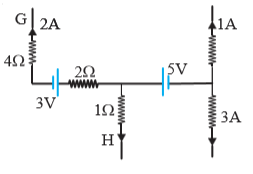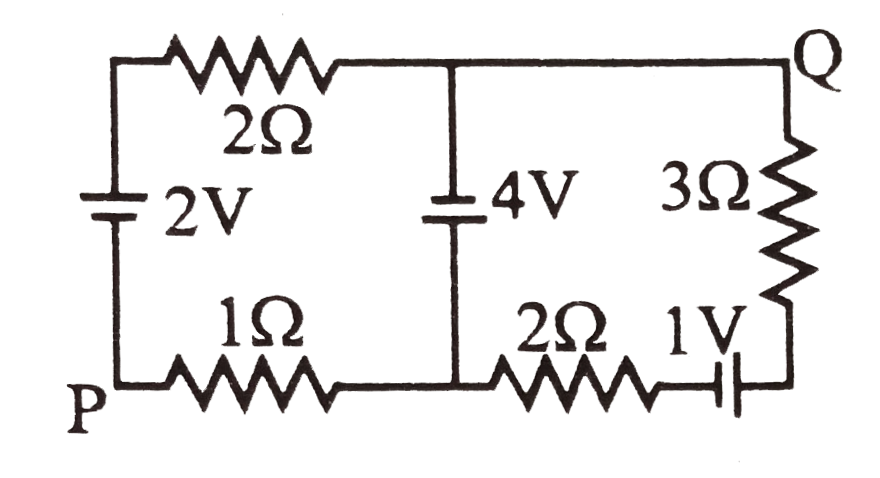Two capacitors C1 and C2 are connected in a circuit as shown in figure. The potential difference (VA−VB) is

A
8V
B
−8V
C
12V
D
−12V
Video Solution
Text Solution
The correct Answer is:B
By using KVL A to A
12+q4−24+q2=0
q2+q4=12
q=12×43=16μC
VA−VB=−q2μC=−8V
|
Topper's Solved these Questions
- MOCK TEST 6BOOK - CAREER POINTCHAPTER - MOCK TEST 6EXERCISE - Part (B) (CHEMISTRY)
30 Videos
- MOCK TEST 6BOOK - CAREER POINTCHAPTER - MOCK TEST 6EXERCISE - Part (B) (CHEMISTRY)
30 Videos
- MOCK TEST 5BOOK - CAREER POINTCHAPTER - MOCK TEST 5EXERCISE - PART (B)-CHEMISTRY
29 Videos
- MOCK TEST 7BOOK - CAREER POINTCHAPTER - MOCK TEST 7EXERCISE - PART (B) - CHEMISTRY
30 Videos
Similar Questions
Knowledge Check
In the part of a circuit shown in figure, the potential different
(VG−VH) between points G A0VB15VC21VD3V
A0VB15VC21VD3VIn the circuit shown, what is the potential difference VPQ?
 A+3VB+2VC−2VDnone
A+3VB+2VC−2VDnoneIn the circuit shown, what is the potential different VPQ ?
 A+3VB+2VC−2VDNone of these
A+3VB+2VC−2VDNone of these
Four capacitors C1,C2,C3 and C4 are connected as shown in figure.If potential difference between points A and B is zero, then
View SolutionResistances of 6Ω each are connected in the manner shown in the following figure. The potential difference Vp−Vq is

View SolutionThree capacitors C1,C2 and C3 are connected as shown in, The potentials of P,Q, and R are V1,V2, and V3, respectively. Find the potential V0 at the functionO.
 .
.
View SolutionIn the part of a circuit branch shown in figure-5.304 the potential difference Vab at t=1s is:

View SolutionA circuit shown in the figure consists of a battery of emf 10V and two capacitance C1 and C2 of capacitances 1.0μF and 2.0μF respectively. The potential difference VA−VB is 5V

View Solution


